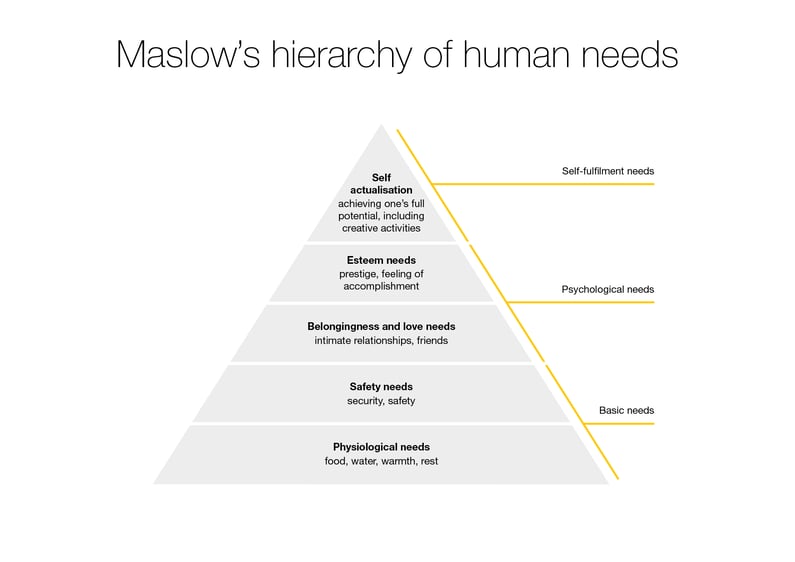by Phil Huzzard | Mar 23, 2023 | Thinking
Dr Peter Steidl on the ‘fear economy’ and corporate resilience.
Dr Peter Steidl is an amazing thinker. He wrote the book on neuromarketing – 3 of them in fact. We met Peter when we were problem solving on a wildfire safety campaign and were stunned by the insights he was able to bring to the behaviour change task.
Following is one of two mini-white papers prepared by Peter, offering advice in the face of what he terms “The Fear Economy”.
THE FEAR ECONOMY: PAPER 1
The fear economy
We live in a disruptive world, with one disruption chasing the next. Covid-19, the Ukraine war, the climate crisis, energy and product shortages, inflation, and an expected recession as Central Banks lift their interest rates to combat inflation are having a massive impact on how we live – and an even greater impact of how we feel about the future. Consumer behaviour is driven mainly by the latter – how we feel about the future.
Research has shown that levels of stress and anxiety have risen dramatically as consumers are fearful of the future. As a result, we see a Fear Economy emerging from the rubble of the benevolent world that gave us growth for many decades. Times are tough and getting tougher, but disruption also creates opportunities for those who are prepared and willing to reinvent their organisation and its market relationships.
The Fear Economy Series explores how companies can take advantage of the massive disruption and not just survive but thrive.
Several of today’s dominant brands were catapulted to leadership when they capitalised on a disruption. There is an opportunity for brands to develop a stronger relationship with consumers who are looking for brands showing leadership and an understanding of the challenges consumers are facing.
Learning from history
To the best of my knowledge there is no one better informed about how companies used past disruptions to their advantage than Douglas Holt (Douglas Holt and Douglas Cameron Cultural Strategy: Using Innovative Ideologies to Build Breakthrough Brands, 2012).
His analysis of how some of today’s leading brands got their break when they were small, insignificant, and lacking resources, is shining a light on how adverse conditions can become – or be turned into – the source of competitive advantage. Of course, these disruptions were nothing like we are facing today, but the principles are nevertheless valid.
Take, for example, a time when Americans became increasingly dissatisfied with the idea of the corporate man and what Holt and Cameron call the “white-collar sweatshop”.
By recognising this dissatisfaction, Corona managed to replace Heineken as the leading imported beer brand in the United States. Corona presented a cultural expression that resonated with the ideological needs of their target audience, which it symbolised by showing people relaxing on a Mexican beach with a Corona – doing nothing.
There are always people who feel strongly about what is happening in their country, but don’t want to speak out or feel that their influence is too insignificant to be heard. Ben & Jerry was one of hundreds of ambitious ice cream retailers with no financial backing, a minute marketing budget, and a lack of distribution infrastructure. Yet it beat some much better-funded competitors to become a leading ice cream chain by bringing the Jester Archetype to life, highlighting what was wrong in the world in a colourful, empathetic and often funny way.
Or take Nike. When Japan took the lead in a variety of industry sectors, such as electronics and automotive, Americans worried that they had lost their world-leading competitive position by becoming complacent and weak, lacking the self-discipline required to aggressively defend its leading position.
Nike had always taken the position of the underdog, claiming that it can win against all odds. Initially, it focused on African American athletes who came from disadvantaged backgrounds yet succeeded. Later, the brand highlighted that women were not given the same opportunities that were open to men, yet still succeeded. And all the time Nike encouraged everyone who listened that they should ‘Just Do It!’ (i.e. test their own boundaries, most likely finding out that they can do a lot better than they thought).
The point is that Nike’s positioning and its focus on the underdog was very much addressing the American public feeling that it needed to toughen up to secure their global economic dominance. Within a few years Nike became a leading brand in the United States and was on the way to being the world’s pre-eminent athletic apparel brand. These are just handful of case examples. For us, it is now time to develop a conceptual framework, which can then be applied to today’s disruption.
Conceptual framework
We know that many consumers (as well as industrial buyers) review their purchases driven by a fear of the future. This includes even habitual purchases that may not have been given any thought to for a long time – sometimes decades.
The problem faced by many brands it that the relationship they have with consumers exists at the product level. They deliver certain qualities (e.g., reliable, value-for-money, fit for purpose, et cetera). Facing an uncertain future, buyers evaluate if they really want to continue buying the brand, switch to a less expensive option (often the case with FMCG purchases), or delay purchases (often the case with major purchases).
Importantly, this review is made at the product level (considering if the product warrants continued purchases).
Let me now introduce Maslow’s Hierarchy of Needs to conceptualise the relationship consumers have with a brand. Maslow’s hierarchy of needs does not reflect how our brain is organized, but it is a useful concept to visualise the impact of strategies and initiatives.

To illustrate, let’s have another look at Nike. This brand has used its Just Do It! line to encourage consumers to believe in themselves and explore how far they can go. The aim is to take the relationship from a product focus (fashionable, good quality, prestige, latest technology, etc.) to the level of Self-Actualisation.
Another example is found in the Dove personal care brand. A strategy taking the brand to a higher-level relationship does not depend on disruption as Dove has proven. Its Real Beauty campaign which has addressed the lack of self-esteem experienced by many women, has been successful over several years, brought alive through a series of high-impact initiatives.
Dove moved the brand’s positioning in the consumer’s mind from a product-based focus (good quality, value-for-money, reliable, etc.) to one based on esteem and, one could argue, even self-actualization, as Real Beauty aims at eliminating a key barrier to self-actualisation, namely the lack of self-confidence.
Obviously, this strategy could not have been pursued effectively by a cosmetics company that capitalises on women’s lack of self-confidence. If such a company had launched a Real Beauty campaign, it would have been seen as a white-washing effort. For Dove the campaign proposition is a natural fit. The brand does not cause the very problem it is attacking. The resulting marketing initiatives take the relationship between the brand and the consumer to a higher level.
It is important to note that brands pursuing this strategy did not have an impact on the real world. Nike might have caused the average American fitness level to rise, but it did not change the competitiveness of industry. Tom & Jerry provided a mouthpiece for disaffected Americans but did not change reality. Dove changed the way women thought about themselves but did not change the way they looked – in fact, the whole point is that they don’t need to change but should celebrate Real Beauty.
In other words, the strategy is based on changing perceptions. It works by impacting on how people feel about themselves or their future, not by making tangible changes to the world. This is the brilliance of this strategy.
It reduces stress by giving consumers the feeling that a positive future is a possible outcome (Nike). It reduces anxiety by showing that they are not alone in their worries and their anger (Ben & Jerry). It reduces stress by offering an escape (Corona). It reduces anxiety by demonstrating that one’s worries about their physical appearance are often unfounded (Dove).
There are two ingredients required when developing a higher-level relationship between a brand and consumers:
The first requirement is for a brand strategy that addresses a real concern or fear that is dominating the consumer’s thinking. It is important that the brand has legitimacy to address this fear. As already mentioned, a cosmetics company could not have taken Dove’s approach, Corona could not have succeeded taking, say, Nike’s approach, and so forth. The brand cannot be part of the problem and must be a natural fit for the solution to be offered.
The second requirement is for a creative concept that brings the strategy alive in a high-impact way that resonates with the target segment. Dove has excelled in bringing the Real Beauty concept alive in many different, unexpected ways. Nike has consistently encouraged us to ‘Just Do It!’, to break through our boundaries and realise we can be more. Ben & Jerry has used humour in its role as Jester to address major problems that are of great concerns to many consumers, although its strategy has suffered lately, possibly stretched by Unilever’s acquisition that spread the brand across many markets.
Taking the relationship between your brand and the consumer to a higher level is certainly worth considering given the massive disruption that is developing, creating a Fear Economy where consumer behaviour is shaped by uncertainty and worries about the future. In this environment consumers are typically receptive to a brand that helps them deal more effectively with their fears, by understand what is happening, showing a way forward, or helping them realise that their worst fears are unfounded.
Look for The Fear Economy: Paper 2 in our next edition of New & True.
Call Phil Huzzard on 0418 344 763 or email philiph@dprandco.com.






